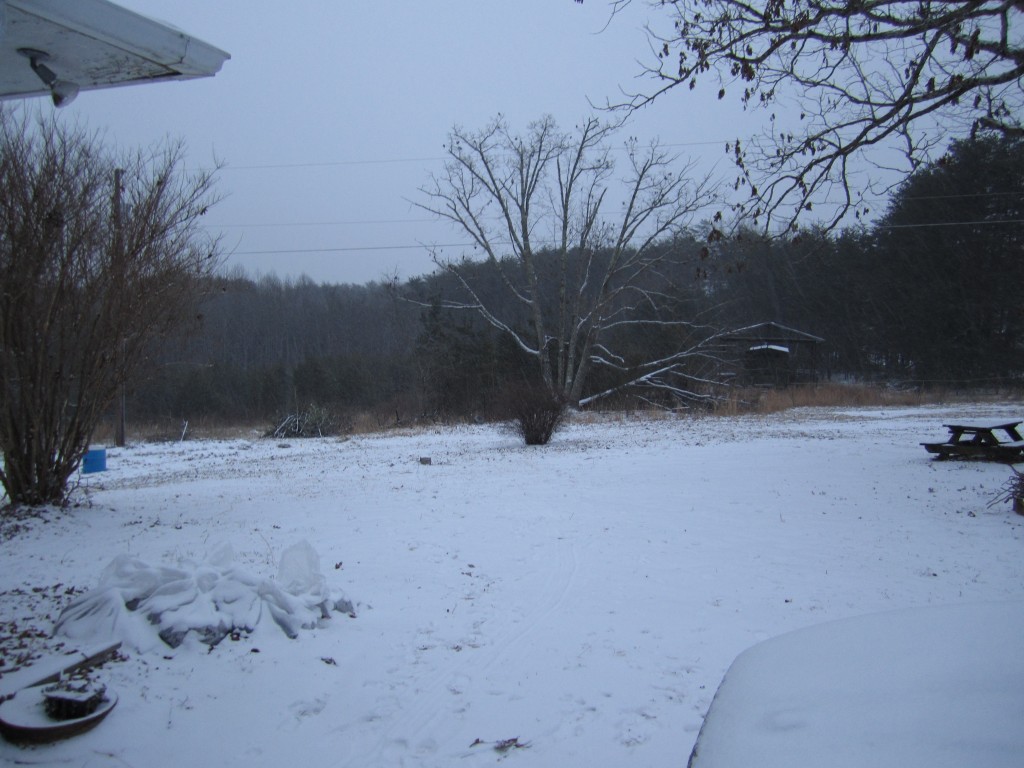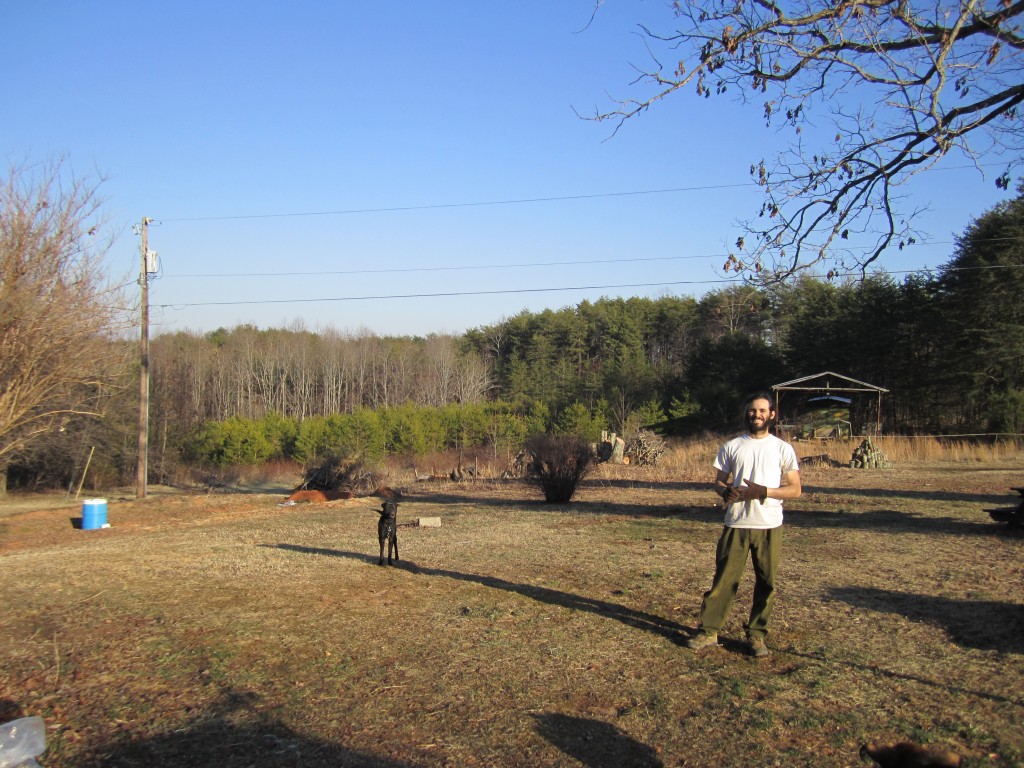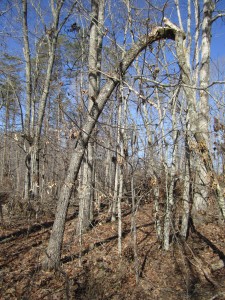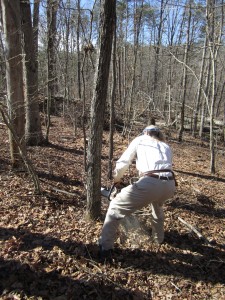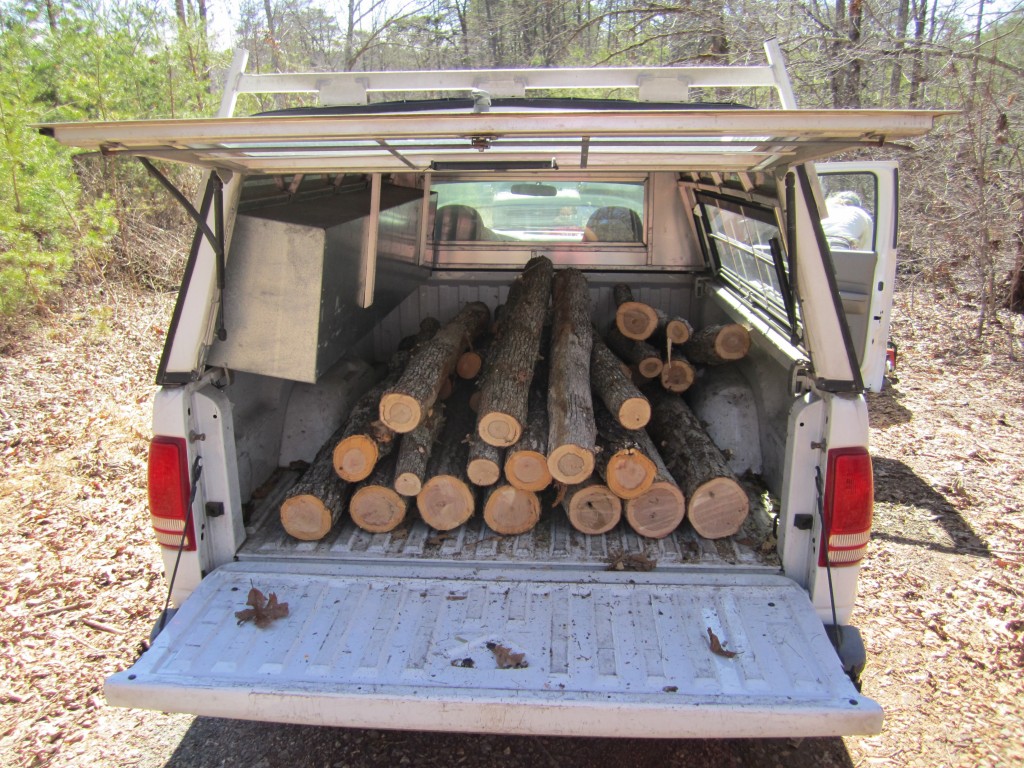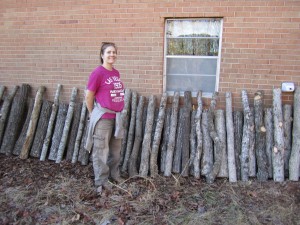as jason mentioned in his post yesterday, this weekend we enlisted my father’s help to clear a dying oak tree in our yard. i’m hoping that we’ll decide to use most of the new-found space for garden beds and a small orchard! we both really love the idea of cutting the stumps (there were 4 large “fingers” that made up this tree) to make them into seats, a table, and perhaps even a foot rest! we’re also thinking about somehow incorporating the space into our wedding… perhaps where the ceremony itself takes place… but we’re not sure yet.
starting to work in this area around the tree, we weren’t totally sure what the final product would be. we had originally thought to start cleaning up around the barn by clearing and pruning, thereby opening up that spot for wedding antics–but jason and i couldn’t agree on how to approach it.
sometimes we have similar visions of what we’d like to do with our land/yard and other times we can’t agree at all–this was one of those times. that’s just the nature of love and partnership! we did both agree, however, that we wanted to clear the barn area but we couldn’t come to a consensus about what to do with the cut trees and the empty space we would end up with afterwards…
and so we dropped that idea and dove head first into working on the area around the oak!
there were a lot of pines and scrubby trees to cut and tons of green briar to rip out. as jason mentioned, poison oak abounds in that area, and although we killed a lot of it, we’ll certainly have to weed eat (or pig eat) in the near future.
we also found broken glass, tires, decaying lumber, metal (grates, tool boxes, cans, screws), plastic, and even a truck’s large tool rack. most items were trash but some were treasure!
after clearing all of the junk and the smaller growths under the large oak “fingers,” the chainsawing began. jason and i do not own our own chainsaw yet, and it is a big help to have a trusted family member willing to help! my dad has also helped out by cutting oak logs for this year’s mushroom crop. even though chainsaws are super useful, they still make me somewhat nervous (even though i’ve been around them my whole life) so i’m glad to have my dad help. he cut all four trunks of the tree about 4 feet off the ground, notching each of the trunks first so they would fall the way we wanted… except one of them. as soon as this one trunk (that he didn’t notch) started to go down, we could tell that the not-notching approach was not the best idea. the tree did fall the way we had hoped, but it bent upon itself and stayed partly attached to the stump. just looking at the result made me nervous!
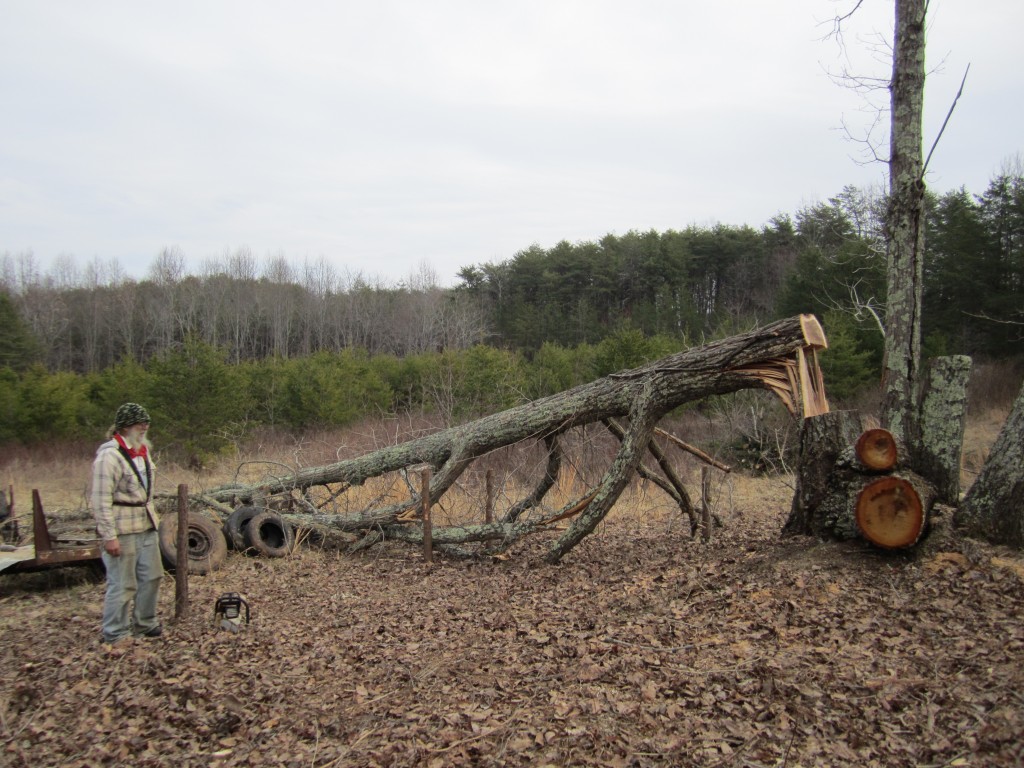
the aftermath of felling the oak trunk without the pre-cut notch. note the size of the tree and how much pressure is sure to be on the bent pieces.
jason and i stayed far away while my dad slowly tried out a couple options for bringing the tree the rest of the way down. first he cut off some larger limbs that appeared to be holding up the trunk. that made the tree shift but did not bring it down. then he tried to cut at the taught pieces of wood that were still attached at the location of the cut (keep in mind that all of the weight of the tree was bowing down these pieces, and it was a surprise that they had not already snapped when the tree fell). needless to say, during this time i yelled at my dad not to make the cuts into the taught, flexed, “wooden slingshots,” but he only grinned at me and went for it anyway. uggghhh… fathers! they can be such punks!
despite my anxiety, his cuts to this part of the tree did not result in injury, and he stopped cutting in that area once the tree shifted a little bit more. then he cut the rest of the limbs off that might have been holding the trunk in the air and we discovered that the tree was actually balancing on a single pine pole coming out of the ground. annoyingly, my dad decided that kicking the pine pole would knock the heavy trunk off and make the tree finally hit the ground. he did this, and in my mind, barely got his leg out of the way before the heavy trunk hit the dirt.
i was horrified by what i perceived to be an exercise in idiotic risk-taking, but he simply laughed at me and said “i knew what the tree was going to do… and my leg was out from under it well before it hit the ground. it didn’t even come near me!” yeah, right!
anyway, we all escaped without injury (which is not surprising for jason and i since we were well away from the action the entire time).
this video shows my father notching one of the trunks and then sawing through it… a much safer tree-cutting practice than the other!
once the portions of the tree were laying on the ground, my dad cut them into manageable rounds and jason and i stacked them “tipi style” so that they would dry better… and now we have two great mounds of firewood that we will need to process, split, and store in the near future.
so, not only did we clear the area of a dying tree and make way for future gardening and livestock practices, we also gained a lot of wood for next winter’s woodstove heating adventure! and although i hate to admit it, sometimes it is ridiculously fun to watch my dad act like a stupid teenager!
.:.
